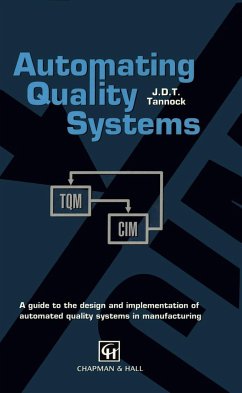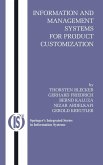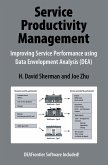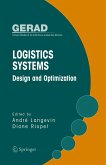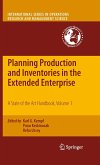One: Philosophy and strategy.- 1. Quality in manufacturing.- 1.1 Introduction.- 1.2 Quality control and the manufacturing system.- 1.3 Quality assurance.- 1.4 Total quality management.- 1.5 Zero defects.- 1.6 Ideas of quality automation.- 1.7 The influence of quality system standards.- 1.8 Quality automation in practice.- 1.9 Summary.- 2 Why automate?.- 2.1 Introduction.- 2.2 Just-in-time and quality systems.- 2.3 Data volume.- 2.4 Human factors.- 2.5 The benefits of quality systems automation.- 2.6 Summary.- 3 The integrated quality system in computerintegrated manufacture.- 3.1 Introduction.- 3.2 Quality in CIM.- 3.3 Vertical integration KAP ARCHIEF.- 3.4 Functional integration.- 3.5 Process integration.- 3.6 Summary.- 4. Assessment of quality performance in manufacturing.- 4.1 Introduction.- 4.2 Defect levels in manufacturing.- 4.3 Value loss functions.- 4.4 Indirect measures of performance.- 4.5 Quality cost.- 4.6 An alternative approach.- 4.7 Conclusion.- Two: Quality systems - design and innovation.- 5. Systems in quality.- 5.1 Introduction.- 5.2 Quality systems.- 5.3 Rational systems - the hard systems approach.- 5.4 The soft systems approach.- 5.5 Computer systems analysis and software development.- 5.6 A suitable systems approach for quality.- 5.7 Summary.- 6. Innovation in quality systems.- 6.1 Introduction.- 6.2 The management of innovation.- 6.3 Promoting successful innovation.- 6.4 Planned evolution.- 6.5 Systems strategy.- 6.6 User involvement.- 6.7 Prototyping.- 6.8 Summary.- 7. Quality systems design and improvement.- 7.1 Introduction.- 7.2 Current methods.- 7.3 Systems design.- 7.4 The IDEFO structured modelling technique.- 7.5 The practical application of IDEFO.- 7.6 A case study of quality systems design.- 7.7 Information modelling.- 7.8 Conclusions - IDEFO as a quality systems design tool.- 8. Strategy for quality systems automation.- 8.1 Introduction.- 8.2 The objectives of automation.- 8.3 The integrated quality system.- 8.4 Quality data collection strategy.- 8.5 Summary.- Three: Automatic quality data collection and inspection technology.- 9. Automatic in-process quality control.- 9.1 Introduction.- 9.2 Controlling the manufacturing process.- 9.3 In-process quality control or product inspection?.- 9.4 Examples of automatic in-process quality control.- 9.5 A case study of assembly process monitoring.- 9.6 Integration with the IQS.- 9.7 Conclusions.- 10. Coordinate measuring machines.- 10.1 Introduction.- 10.2 CMM construction.- 10.3 Touch trigger probes.- 10.4 CMM use and programming.- 10.5 CMM uncertainty and errors.- 10.6 Performance testing of CMMs.- 10.7 Training.- 10.8 Integration with the IQS.- 10.9 Conclusions.- 11. Machine vision.- 11.1 Introduction.- 11.2 Providing the image - the camera and lighting.- 11.3 Image acquisition.- 11.4 Image processing and analysis.- 11.5 Machine vision applications.- 11.6 Integration with the IQS.- 11.7 Ultrasonic techniques.- 11.8 Conclusions.- 12. Automatic testing in the electronics industry.- 12.1 Introduction.- 12.2 Automatic component testing.- 12.3 In-circuit PCB testing.- 12.4 Functional testing.- 12.5 An example of integrated ATE.- 12.6 Summary.- 13. Automatic dimensional gauging.- 13.1 Introduction.- 13.2 Shop-floor dimensional inspection equipment.- 13.3 Dimensional measuring transducers.- 13.4 Automated applications using dimensional gauging.- 13.5 Process control integration.- 13.6 Conclusions.- Four: Quality data analysis and management.- 14. Statistical process control software, data collection and computer-aided inspection.- 14.1 Introduction.- 14.2 Statistical process control software.- 14.3 Shop-floor data collection.- 14.4 A case study in computer-aided inspection.- 14.5 Conclusions.- 15. Automating quality data management - the quality database.- 15.1 Introduction.- 15.2 Existing systems for quality data management.- 15.3 Requirements for the quality database.- 15.4 Full automation - the active quality database.- 15.5 Maintenance of inspection...
Bitte wählen Sie Ihr Anliegen aus.
Rechnungen
Retourenschein anfordern
Bestellstatus
Storno

